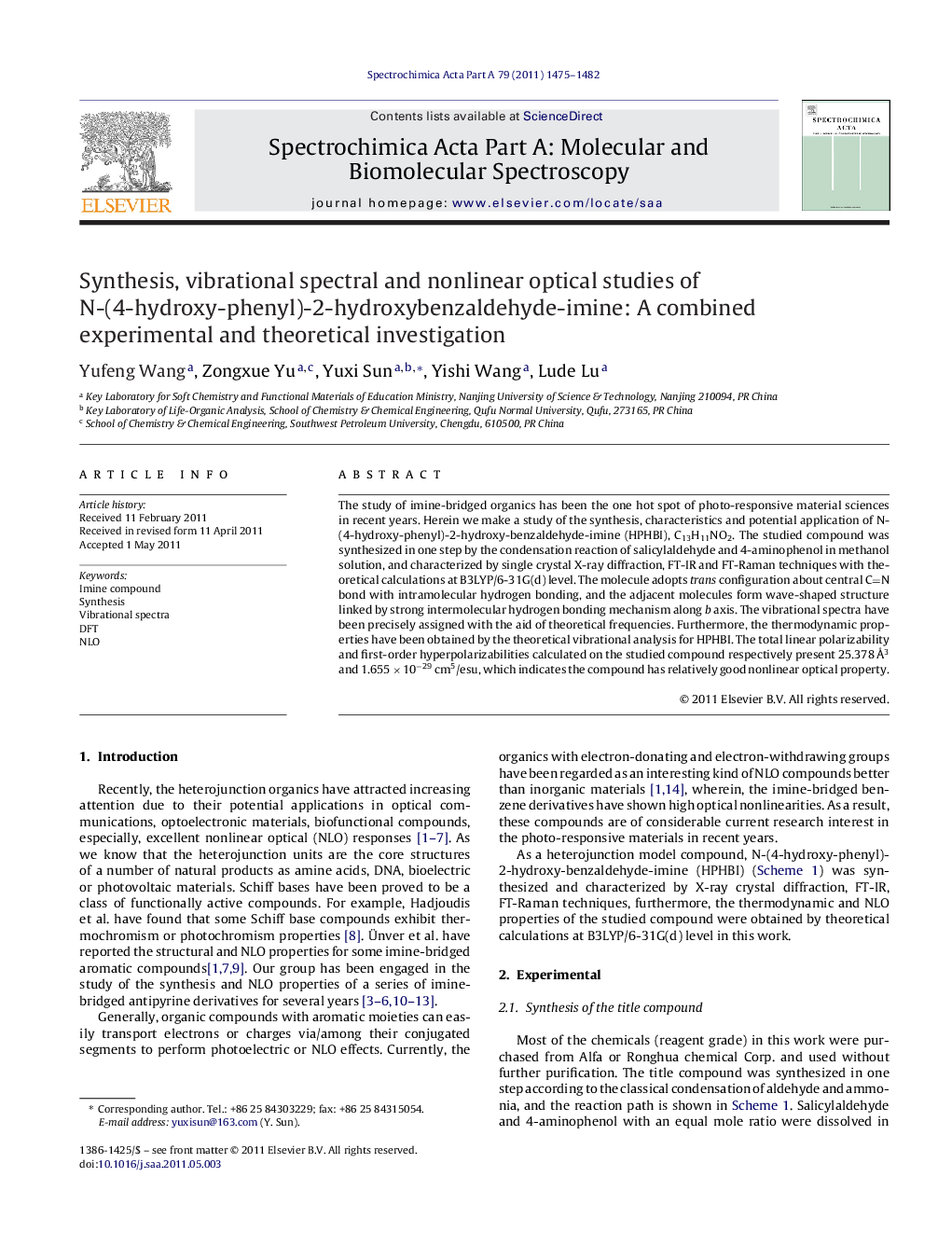| Article ID | Journal | Published Year | Pages | File Type |
|---|---|---|---|---|
| 1236549 | Spectrochimica Acta Part A: Molecular and Biomolecular Spectroscopy | 2011 | 8 Pages |
The study of imine-bridged organics has been the one hot spot of photo-responsive material sciences in recent years. Herein we make a study of the synthesis, characteristics and potential application of N-(4-hydroxy-phenyl)-2-hydroxy-benzaldehyde-imine (HPHBI), C13H11NO2. The studied compound was synthesized in one step by the condensation reaction of salicylaldehyde and 4-aminophenol in methanol solution, and characterized by single crystal X-ray diffraction, FT-IR and FT-Raman techniques with theoretical calculations at B3LYP/6-31G(d) level. The molecule adopts trans configuration about central CN bond with intramolecular hydrogen bonding, and the adjacent molecules form wave-shaped structure linked by strong intermolecular hydrogen bonding mechanism along b axis. The vibrational spectra have been precisely assigned with the aid of theoretical frequencies. Furthermore, the thermodynamic properties have been obtained by the theoretical vibrational analysis for HPHBI. The total linear polarizability and first-order hyperpolarizabilities calculated on the studied compound respectively present 25.378 Å3 and 1.655 × 10−29 cm5/esu, which indicates the compound has relatively good nonlinear optical property.
Graphical abstractFigure optionsDownload full-size imageDownload as PowerPoint slideHighlights► The title compound (HPHBI) was synthesized in one step by an amine-formaldehyde reaction. ► The HPHBI molecule adopt trans configuration about CN bond with intramolecular hydrogen bonding. ► The vibrational spectra have been precisely ascribed to molecular structure. ► The thermodynamic properties have been obtained by the theoretical vibrational analysis. ► The theoretical first-order hyperpolarizabilities is 44.4 times magnitude of urea.
